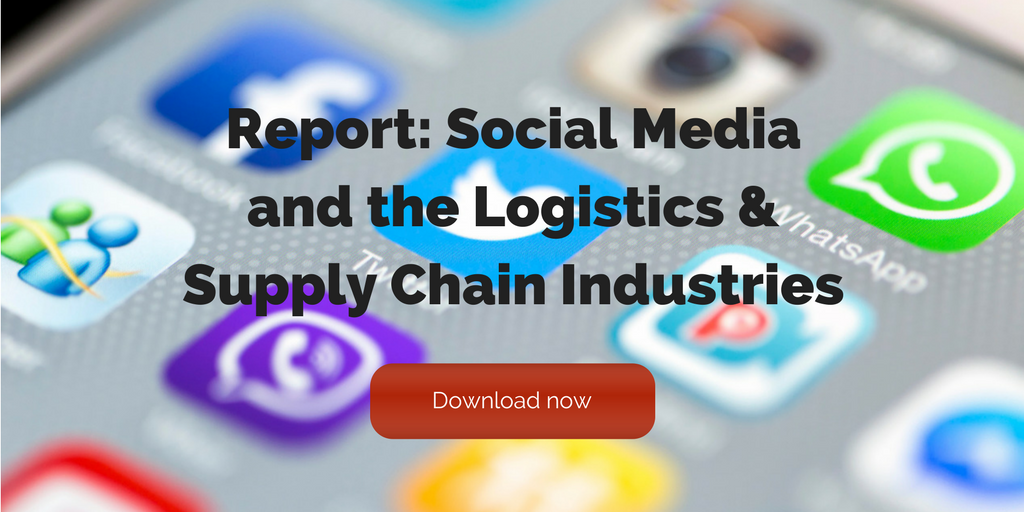
by Fronetics | Jan 15, 2018 | Blog, Marketing
Updated January 2025
Marketing automation can help supply chain marketers become more efficient and more successful in earning and converting leads.
Automation is changing today’s supply chain, and not just because robots and autonomous vehicles are scooting around warehouse floors. Supply chain marketers can use automation to drive efficiency and improve our success rates.
HubSpot recently reported that businesses using marketing automation to nurture leads received a whopping 451% increase in qualified leads. So how can you reap these benefits? Let’s take a quick look at automated marketing applications in supply chain marketing.
How can I use marketing automation for supply chain lead generation?
B2B buyers are increasingly demanding vendors provide personalized experiences throughout the buyer’s journey. That makes marketers’ jobs 1 million times more difficult in having to provide custom lead-nurturing content to all prospects in the database. Enter, marketing automation — a way to automate the process of personalizing leads’ interactions with your business. HubSpot describes marketing automation as “software and tactics that allow companies to buy and sell like Amazon — that is, to nurture prospects with highly personalized, useful content that helps convert prospects to customers and turn customers into delighted customers.”
Examples of ways supply chain marketers might use marketing automation include:
- Chatbots
- Social media scheduling tools
- Thank-you, welcome, and other triggered-by-an-event emails
- Event reminders
- Email workflows
The Evolution of Marketing Automation in Supply Chain
Marketing automation is transforming how supply chain marketers generate and nurture leads. According to Salesforce’s 2023 State of Marketing Report, 71% of marketers report significant productivity improvements through automation implementation.
Current State of Automation Adoption
Recent market research paints a clear picture of automation’s growing impact in B2B marketing. According to Gartner’s latest findings, more than three-quarters of B2B marketers have either implemented or are in the process of implementing marketing automation solutions. This widespread adoption is driven by tangible results: teams are seeing their manual task load reduced by nearly a third through automation. The benefits extend beyond efficiency – Salesforce’s 2023 research shows that 69% of marketing teams have enhanced their personalization capabilities through automation. These improvements in efficiency and customization translate to bottom-line impact, with McKinsey reporting that companies typically achieve a 15-20% reduction in their overall marketing costs after implementing automation solutions.
Understanding Modern Supply Chain Marketing Automation
Core Technology Components
B2B buyers expect personalized experiences throughout their journey. Successful marketing automation for supply chain lead generation combines strategies like these:
- Chatbots
- Social media scheduling tools
- Thank-you, welcome, and other triggered-by-an-event emails
- Event reminders
- Email workflows
- AI-powered lead scoring
- Behavioral analytics
- Multi-channel campaign management
- Predictive engagement tools
Key Automation Capabilities
Modern supply chain marketing automation platforms offer:
1. Intelligent Lead Management
- Automated lead scoring
- Behavior tracking
- Engagement analysis
- Qualification workflows
2. Multi-Channel Campaign Orchestration
- Integrated social media management
- Content distribution
- Cross-platform analytics
- Performance tracking
3. Email Marketing Automation
- Dynamic segmentation
- Behavioral triggers
- Performance optimization
- A/B testing capabilities
Implementation Strategy
Creating Effective Automation Workflows
We see companies achieve the best results when they focus on:
- Strategic Segmentation
- Industry-specific targeting
- Behavioral segmentation
- Company size consideration
- Content Personalization
- Dynamic content delivery
- Automated follow-up sequences
- Engagement-based adjustments
- Lead Qualification
- Predictive scoring
- Behavior analysis
- Sales readiness assessment
Example of Marketing Automation for Supply Chain Lead Generation: Automated Email Workflows
Automation is particularly useful in email. I’ve written before about how marketers spend way too much time creating marketing emails. How much of your day could you gain back if you didn’t have to create, send, and follow up with prospects via email?
One easy and effective way to utilize marketing automation in your emails is to set up an automated email workflow. That is a series of emails that a user will receive from you based on actions they take.
First, create an email list from your database based on certain criteria — like leads who have been inactive for 6 months or longer. Send them an email inviting them to download a new industry report you have published (using personalization tokens to show them its relevancy to their business). Then set a second email to send to only those who downloaded the report a day or two later thanking them for downloading. A third email could follow several days later offering a case study related to the topic. When someone downloads that case study, the workflow could trigger the designated sales rep to receive a notification to follow up with the prospect.
Instead of having to watch your database to see when a prospect takes each of these actions, then completing the necessary follow-up, automation software (we like HubSpot) can do this for you right when it happens. What’s more, those leads that have gone through the workflow will be more qualified (meaning more likely to buy), so your sales reps’ time will be better spent as well.
Measuring Success of Marketing Automation for Supply Chain Lead Generation
Key Performance Indicators
According to McKinsey’s Supply Chain Analytics Report, successful implementations show:
- 55% improvement in lead quality
- 15-20% reduction in marketing costs
- Increased sales team productivity
- Faster sales cycles
Marketing automation won’t make you irrelevant
Fear not, supply chain marketer. Marketing automation will not make you redundant. Instead, automation makes marketers more efficient, more successful, and more valuable. It’s really a win-win.
Related posts:

by Fronetics | Jan 11, 2018 | Blog, Logistics, Supply Chain
Bookmark these must-follow supply chain and logistics blogs to keep up with the latest industry news and happenings.
What are your favorite supply chain and logistics blogs? Fronetics is currently conducting a survey to determine which blogs you think are the best going into 2018. Vote here!
But we also want to tell you about some of our favorite blogs that we follow.
These 10 blogs are all rich with industry news and the latest trends to keep you in the know. They cover a wide range of topics, from research to strategy, and feature some of the top thought leaders in the field.
10 must-follow supply chain and logistics blogs (in no particular order)
1. Supply Chain 24/7
The Supply Chain 24/7 blog is a top business resource for Transportation, Distribution, Logistics and Supply Chain professionals. Read this blog.
2. Women in Trucking
These two blogs focus on various issues facing women in the trucking industry. WIT President Ellen Voie writes about topics in employment, achievement, and driving change in the industry. The Women In Trucking blog features posts by truckers, mostly industry veteran Sandy Long, about everyday concerns and experiences facing female drivers and their families.
3. Supply Chain Brain
This portal for supply chain executives features original and aggregated content touching on multiple industries. Read this blog.
4. EBN Online
This blog features top industry leaders publishing on topics including electronics manufacturing, global supply chain, and management logistics. Read this blog. (P.S. Read our CEO Frank Cavallaro’s blog here.)
5. Supply Chain Matters
The blog of Bob Ferrari offers his expertise on all aspects of supply chain business processes and supporting information technology. Read this blog.
6. Supply Chain Management Review
This vast website includes trending articles on supply chain and logistics strategies developments, many written by university-level professors. Read this blog.
7. Supply Chain Digital
Supply Chain Digital is a forward-thinking digital community aimed at providing procurement & supply chain professionals with industry-leading news, analysis, features and reports about the world’s biggest supply chains. Read this blog.
8. Cerasis
The Cerasis blog covers industry trends, educates and explains rules and regulations, busts myths, and has awesome infographics. Our Creative Director, Elizabeth Hines, is a contributor here. Read this blog.
9. Logistics Viewpoint
This blog features think pieces from three leading supply chain and logistics analysts with the mission to provide clear and concise analyses of logistics trends, technologies and services. Read this blog.
10. Supply Chain Shaman
Lora Cecere’s blog focuses on “the use of enterprise applications to drive supply chain excellence.” Read this blog.
What supply chain and logistics blogs are you reading this year?
Related posts:


by Fronetics | Jan 10, 2018 | Blog, Content Marketing, Marketing
Those writing for SEO need to be conscious of how users are being more conversational in their search queries and how search engines are analyzing phrases over keywords.
This is part two of a four-part series about writing for SEO for supply chain marketers.
Last week, we kicked off our Writing for SEO series by taking a look at how search engines are changing. As we delve further into updated strategies for effective SEO writing for supply chain marketers, today we’ll explore the ways in which people are changing their search behaviors, and what that means for your content.
Search queries are turning conversational
Before we start quoting studies and scholarly research, think for a minute about how you search the web, and how that’s changed over the past several years. Chances are, you do lots of searching on your phone, sometimes using voice search. (“Siri, what’s the fastest pizza delivery in my neighborhood?”) And you’re probably “talking” to the internet more like a friend than an encyclopedia.
The studies back us up. According to HubSpot’s blog, “Amplified by the rise of mobile and voice search, queries have become more and more conversational.” A few years ago people tended to enter a single term into a search engine. Now they’re increasingly asking questions and using full, complex sentences.
Search engines are responding. In order to understand this new type of query better, much of Google’s product development in the past 3-4 years has been about natural language processing. The 2013 introduction of Hummingbird, Google’s search algorithm, is a prime example.
Writing for SEO with topics over keywords
Search algorithms like Hummingbird have begun analyzing phrases rather than relying solely on keywords. This is big news for writing for SEO. As Google and other search engines move from keyword to topic-focused SEO, you need to be adjusting your content strategy to maximize your visibility.
We pointed out last week that keyword rankings aren’t as reliable as they used to be. In summary, search engines have evolved beyond the point that everyone gets the same results from a query (depending on location, search history, etc.). Therefore rank can change drastically depending on context. Now we’re looking at the same issue from the user end.
“The traditional view of ‘keywords’ in search has changed,” according to HubSpot. Traditional writing for SEO technique tells us that there were about 10-20 “big keywords” that were sought after for ranking within a topic. Now, there are hundreds or thousands of “long-tale variations” that people regularly search for within a topic — and change based on location.
To boil it all down, it’s no longer enough to dominate a few words. What’s important is broad visibility across a topic.
Make sure to read the other posts in our series, part 1: Writing for SEO: Search Engines are Changing, part 3: Writing for SEO: Topic Clusters and Pillar Content (NOT Keywords), and part 4: Writing for SEO: Measuring the Success of Your Content.
Related posts:

SaveSave

by Fronetics | Jan 9, 2018 | Blog, Current Events, Logistics, Marketing, Social Media, Supply Chain
Facebook is making lots of changes that will affect businesses’ organic reach. Here’s what you need to know and how it may impact your company.
In our most recent social media news post, we mentioned that Facebook was experimenting with an Explore Feed feature. You may or may not have heard about how this might affect businesses’ ability to achieve organic reach on Facebook.
The social media network claims it is trying to create the best user experience possible. But it might come at a high cost to businesses trying to reach new audiences. Could this be the end of organic reach for businesses on Facebook? Let’s take a look.
What is Facebook’s Explore Feed?
Explore Feed is a new tab on your Facebook homepage that will include recommended content that it thinks you might find interesting. This will include posts, articles, photos and videos from users and other Pages you don’t currently follow.
This separate news feed will only appear when you click on the Explore tab, leaving users’ homepage news feed to content from friends and Pages you already follow.
“We’ve heard from people that they want an easy way to explore relevant content from Pages they haven’t connected with yet,” says Facebook in a statement. “Businesses should be optimistic about the potential for users interested in content like theirs to find their pages through the new Explore Feed.”
What does this mean for your business?
In October, Facebook launched Explore Feed as an experiment in six countries — Sri Lanka, Bolivia, Slovakia, Serbia, Guatemala, and Cambodia. The results showed a massive decline in businesses’ organic reach. Most countries reported a drop of two-thirds within the first 48 hours after Explore launched.
A user’s feed will now only show their friends’ posts and paid posts and advertisements. This is a huge disadvantage for small businesses with limited budgets that have traditionally relied on the organic reach of their Facebook posts to help attract new audiences.
As Mashable says: “That means Facebook’s main feed is no longer a free playing field for publishers. Instead, it’s a battlefield of ‘pay to play’, where publishers have to pony up the dough to get back into the News Feed.”
What now?
Facebook insists these changes are in direct response to requests from users for an easier way to discover new Pages they aren’t already following. But it means a lot of changes for businesses running a Facebook business page. Companies need to ensure their content is high quality, unique and highly relevant. And more and more companies will have to start dipping into their budgets to boost posts and buy ads.
Important to note
Facebook is also tightening the reigns on Pages and individuals that use engagement bait to attract new followers. What is engagement bait?
“Engagement bait is a tactic to create Facebook posts that goad people into interacting through likes, shares, comments, and other actions in order to artificially boost engagement and get greater reach on News Feed,” says Facebook’s Newsfeed Guidelines. The social network’s new algorithm will demote any posts by individuals or Pages that promote their content through engagement bait.
Fronetics’ takeaway
Despite all of these new changes and their accompanying challenges, we’re not ready to write off Facebook for businesses just yet. The key will be for companies to continue to provide the best content possible through the social media platform to organically engage followers.
What do you think of Facebook’s new Explore Feed?
Related posts:


by Fronetics | Jan 8, 2018 | Blog, Marketing, Social Media, Talent
LinkedIn, with almost 500 million users, is the #1 networking site for professionals. Here are 7 supply chain and logistics professionals to follow for top posts and articles in your industry.
With 94% of B2B marketers using LinkedIn to distribute content, it’s now the premier social media site for businesses. More and more users — including supply chain and logistics professionals — are turning to LinkedIn to keep up with industry news and to understand larger trends affecting their businesses. In fact, LinkedIn gains two new users every second.
With LinkedIn Publishing, users are able to create long-form posts and articles to communicate their subject-matter expertise and interests. Following LinkedIn members gives you access to their profiles, as well as any original or third-party posts they publish on their newsfeeds. So your newsfeed becomes populated with the content the users you follow are publishing and sharing — meaning, if you follow the right people, you get invaluable insight into industry leaders’ thoughts and trends. So what are you waiting for? Here are some of our favorite supply chain and logistics professionals to follow on LinkedIn.
7 top supply chain and logistics professionals to follow on LinkedIn
Kelli Saunders, President of Morai Logistics Inc. at Mode Transportation Associates
Kelli Saunders was recently named one of Canada’s Most Powerful Women – Top 100 for her superior work in the Women’s Executive Network. She was also named Women Exporter of the Year in 2016 and received Canada’s Doing Business Award in 2015. Saunders is a high-achieving entrepreneur with over 30 years of outstanding performance in the supply chain and logistics industries. She understands the complexities and nuances involved in long-term sustainability in the transportation industry.
Sean Griffey, CEO and Co-Founder at Industry Dive
Awarded the Digital Hall of Fame Media News Award in 2015, Sean Griffey is co-founder and CEO of Industry Dive, a digital media company that publishes business news and original analysis for 4.5 million executives in 12 vertical markets. Griffey also runs the Logistics and Supply Chain Professionals group on LinkedIn with almost 270,000 members.
Tim Debus, President & CEO of Reusable Packaging Association
Tim Debus has 20+ years of experience in bringing to market new technologies and leading industry initiatives to improve the production and supply of agricultural commodities, including the development of reusable plastic containers. His group, the Reusable Packaging Association (RPA), leverages its collective voice of industry-leading knowledge to advance the adoption of reusable packaging by clearly demonstrating supply chain efficiencies, environmental benefits, ergonomic improvements, and cost advantages to end users in all industries.
Patrick Bian, Director of Supply Chain Management at Watts Water Technologies
Patrick Bian is a supply chain executive with a consistent track record developing supply chain strategic roadmaps and leading multi-national teams to support the business vision for global companies. His work at Watts Water Technology provides outstanding solutions used to safely convey, conserve and manage water. Standing president of the French American Chamber of Commerce, New England for the past four years, Bian is also a lecturer at Northeastern University for the Masters Program in Business and Engineering.
Steve Norall, Co-Owner/Founder and Vice President of New Development at Cerasis, Inc.
Steve Norall has an impressive breadth and depth of expertise in the logistics and transportation management space, most recently as co-owner/founder of Cerasis, a top third-party logistics provider and truckload freight broker. A frequent poster, Norall covers all manner of supply chain management and logistics, but his current focus on LTL freight management.
Adrian Gonzalez, President at Adelante SCM & Founder/Host of Talking Logistics
Adrian Gonzalez is a well-respected, trusted, and influential supply chain and logistics analyst and strategic advisor to high-level executives in manufacturing, retail, third party logistics, and technology companies. He is the founder, host, and creative force behind Talking Logistics, a weekly online video talk show where he interviews thought leaders and newsmakers in the supply chain and logistics industry. And he is the founder and president of Adelante SCM, which is focused on enabling supply chain and logistics young professionals to share knowledge, advice, and best practices with each other in a private, trusted, and solicitation-free environment.
Michael Levans, Group Editorial Director at Peerless Media
Michael Levans is the group editorial director at Peerless Media, which oversees the publications of Logistics Management, Supply Chain Management Review, and Modern Materials Handling. He oversees the Alliance Awards, an annual program designed to recognize how shippers and their service providers work together to overcome challenges to critical components of their unique supply chains.
Related posts:







